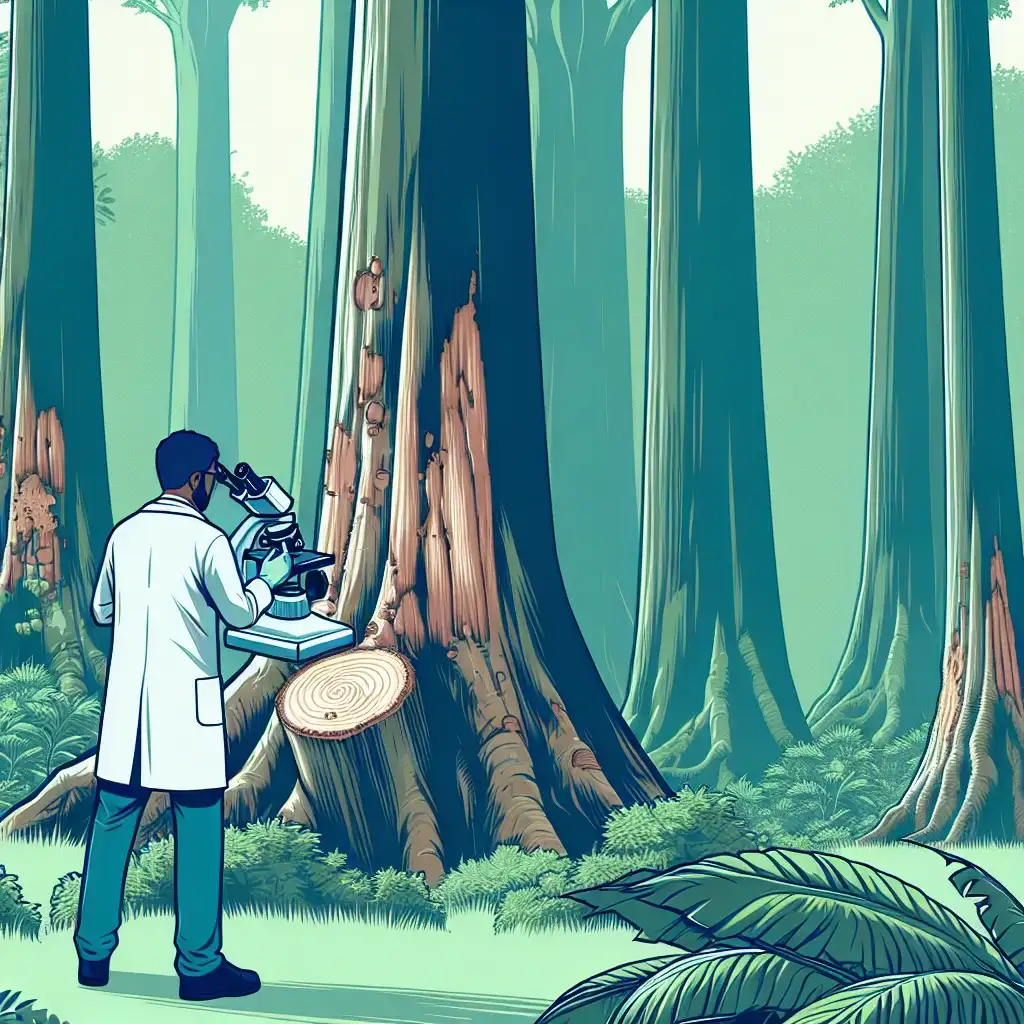Key Points
- Various tree species 'bleed' different fluids like sap or resin when cut, revealing a fascinating connection to their defense mechanisms and health.
- Tree 'bleeding' serves as a valuable indicator of a tree's stress levels and overall health, prompting closer inspection for potential issues.
- Understanding the science behind tree 'bleeding' is essential for proper tree care, highlighting the significance of timing pruning activities and sustainable interactions with trees.
Have you ever noticed that some trees seem to ooze or ‘bleed’ a mysterious substance after being cut? Before you jump to any haunted conclusions, let’s unpack what exactly is happening here. This phenomenon is not only fascinating but it unfolds a story about the tree’s defense mechanisms, health, and its interaction with the environment.
The Science Behind Tree ‘Bleeding’
When you cut into a tree, you are essentially opening up its internal system. Trees are much like humans in the sense that they have a network of ‘veins’ that carry fluids up and down from roots to leaves, although in trees, these are called xylem and phloem. The xylem transports water and nutrients from the roots to the rest of the tree, while the phloem distributes the sugar produced by photosynthesis. When these systems are sliced open, trees can lose sap, which is akin to how humans bleed when they get a wound.
However, not all trees ‘bleed’ when snipped or chopped. The bleeding depends largely on the tree species and the fluid that is being released. For instance, certain trees like maples, birches, and walnuts might ooze sap, which is a sugary fluid. In the spring, these trees accumulate sugar in their sap, making it particularly noticeable when they’re pruned or damaged early in the season.
In other cases, like with pine or cedar trees, what you see might be resin. Resin is more viscous and sticky compared to sap and serves a slightly different purpose. It’s part of the tree’s defense mechanism against insects and fungal infections. When a tree’s surface is breached, resin rushes to the site, acting like a natural bandage, sealing the wound and warding off unwelcome critters and germs.
What Can Tree ‘Bleeding’ Tell Us?
Observing this bleeding can actually tell us a lot about the health of a tree. Continual or excessive bleeding might indicate that a tree is under stress from either environmental factors, physical damage, or disease. For gardeners and tree-caretakers, this could be a valuable signal to inspect the tree closely for any other symptoms of distress or illness.
Moreover, this process raises a curiosity about how trees live and interact with their surroundings. They’re not just static elements in our landscapes; they are dynamic, living organisms that actively defend themselves, manage nutrients, and even communicate distress through natural processes.
Human Activity and Its Impact
Understanding tree bleeding is also crucial for those who interact with trees regularly, like foresters, landscapers, and garden enthusiasts. It teaches us the importance of appropriate tree care – such as the right time for pruning. Cutting a tree during its active growth period can cause it to bleed excessively and potentially lead to health problems. Each tree species has its ideal pruning season, generally during the dormant months when the sap isn’t running as freely.
Additionally, in areas where trees are tapped for their sap (like in maple syrup production), knowing the science behind sap flow and tree health is essential. It ensures that tapping is done sustainably, without causing long-term damage to the trees.
The Bigger Picture
So, next time you notice a tree bleeding, remember it’s not just a curious quirk of nature. It’s a window into the life of the tree and its interaction with the world around it. Each drop of sap or resin tells a story of survival, adaptation, and ecological balance. Understanding these little details not only enriches our knowledge of nature but also enhances our ability to interact with it responsibly and sustainably.
In a world where nature often gets overlooked, paying attention to such phenomenal natural processes helps remind us of the vibrant life that trees embody and the intricate systems that sustain them. Remember, each aspect of nature we understand brings us a step closer to coexisting harmoniously with our environment. Let’s nurture our curiosity and strive for a deeper, respectful relationship with the natural world.

